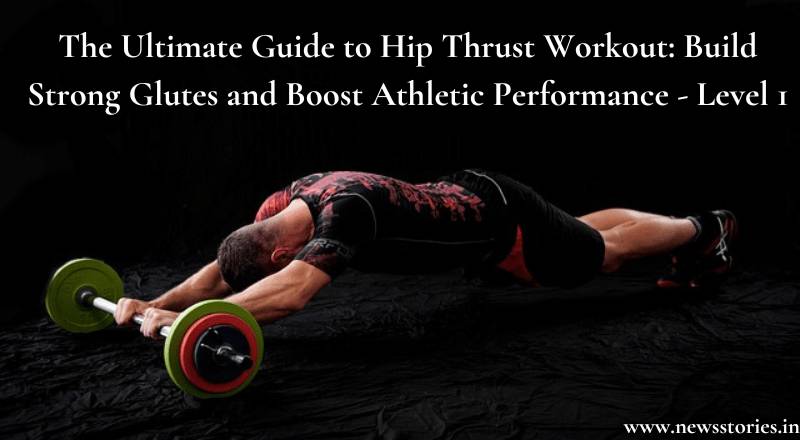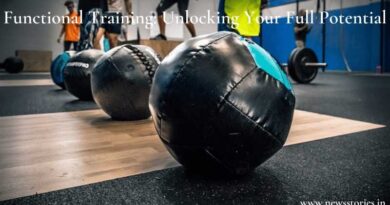The Ultimate Guide to Hip Thrust Workout: Build Strong Glutes and Boost Athletic Performance – Level 1
Description: Discover the power of the hip thrust workout to sculpt strong glutes and enhance athletic performance. This comprehensive guide covers everything you need to know about the hip thrust exercise. Including step-by-step instructions, benefits, variations, and frequently asked questions.
Introduction
In the pursuit of a sculpted physique and enhanced athletic performance. It’s essential to focus on strengthening the gluteal muscles. One exercise that has gained significant popularity. Among fitness enthusiasts and athletes is the hip thrust workout.
By targeting the gluteus maximus, the largest muscle in the body, the hip thrust exercise. It helps build strong glutes, improves posture, and enhances overall athletic performance. In this comprehensive guide, we’ll explore the ins and outs of the hip thrust workout.
Providing you with detailed instructions, insights, and answers to frequently asked questions.
Table of Contents
Heading
Benefits of Hip Thrusts
How to Perform Hip Thrusts
Proper Form and Technique
Common Mistakes to Avoid
Variations of Hip Thrusts
Resistance Bands Hip Thrust
Barbell Hip Thrust
Single-Leg Hip Thrust
Weighted Hip Thrust
Hip Thrust vs. Squats
Incorporating Hip Thrusts into Your Workout Routine
Hip Thrusts for Athletes
The Science Behind Hip Thrusts
Frequently Asked Questions
Conclusion
Benefits of Hip Thrusts
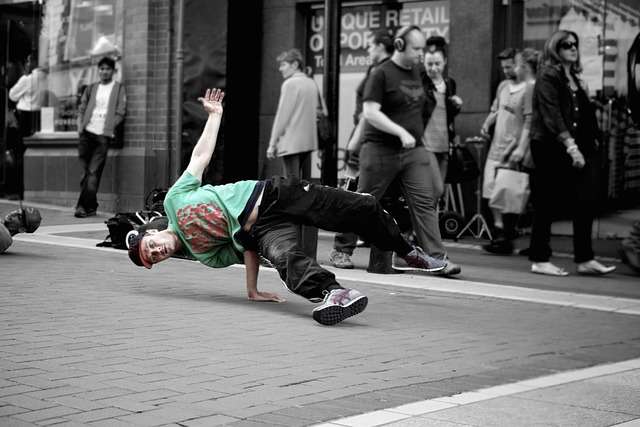
Engaging in regular hip thrust workouts offers a multitude of benefits. Let’s explore some of the advantages that make hip thrusts. A must-have exercise for your glute training routine.
Increased Glute Activation: Hip thrusts specifically target the gluteal muscles. Leading to enhanced glute activation and improved muscle development.
Stronger Glutes: As one of the most effective glute-building exercises, hip thrusts help strengthen. The gluteal muscles, contributing to greater power, stability, and overall strength.
Improved Athletic Performance: Strong glutes are essential for athletic performance, as they play a crucial role. In running, jumping, and other explosive movements.
Enhanced Posture and Lower Back Health: Strengthening the glutes through hip thrusts can help alleviate lower back pain. And improve posture by balancing the muscles in the pelvic region.
Injury prevention: Lack of strength in the glutes can cause imbalances and compensatory movements in other body parts. Increasing the risk of accidents. Regular hip thrust workouts help prevent such imbalances and promote injury prevention.
Also Read : https://newsstories.in/resistance-bands-workout-a-comprehensive-guide-to-building-strength-and-flexibility/
How to Perform Hip Thrusts
Performing hip thrusts correctly is crucial for maximizing the benefits and minimizing the risk of injury. Follow these step-by-step instructions to perform hip thrusts with proper form and technique.
Set Up: Sit on the ground with your upper back against a bench, box, or elevated surface. Place a barbell or a weight plate across your hips. Just below your pelvic bones.
Foot Positioning: Position your feet flat on the ground, hip-width apart. Ideally, Your knees ought to be bent 90 degrees, ideally.
Engage the Core: Brace your core muscles by drawing your navel towards your spine. This will help stabilize your spine throughout the exercise.
Initiate the Movement: Press your heels into the ground and drive your hips upward. Extending your hips until your thighs and torso are in a straight line. At the culmination of the exercise, squeeze your glutes.
Lowering Phase: Lower your hips back down to the starting position in a controlled manner, maintaining tension in your glutes.
Repeat: Perform the desired number of repetitions, ensuring proper form and control throughout the entire movement.
Common Mistakes to Avoid
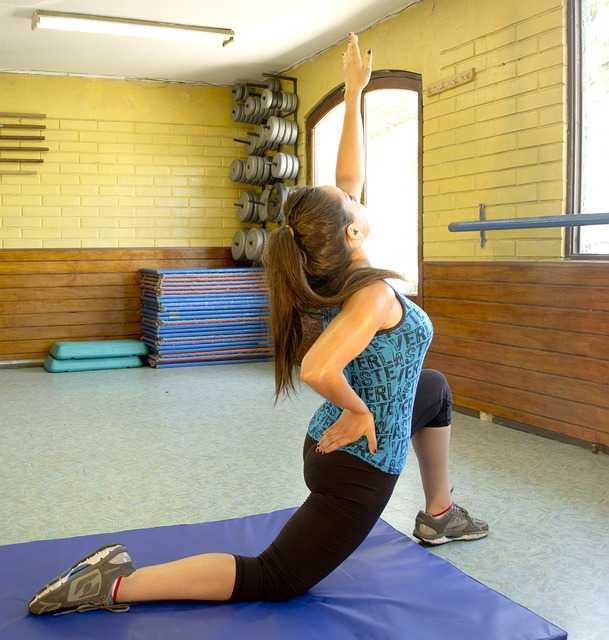
While hip thrusts are a highly effective exercise, common mistakes can hinder your progress and increase the risk of injury. Be mindful of the following errors and avoid them.
Using Too Much Weight: It’s crucial to start with an appropriate weight that allows you to maintain proper form throughout the exercise. Using excessive weight can compromise your technique and increase the risk of injury.
Improper Bench Placement: Ensure the bench or elevated surface is positioned correctly. Your upper back should be in contact with the bench. Throughout the movement to provide stability and support.
Lack of Core Engagement: Neglecting to engage your core muscles can lead to instability and strain on the lower back. Always brace your core and maintain a strong midsection.
Incomplete Range of Motion: Aim to achieve a full range of motion, allowing your hips to extend fully at the top of the movement. Avoid cutting the movement short or only performing partial repetitions.
Uncontrolled Lowering Phase: Lower your hips back down in a controlled manner, rather than dropping them abruptly. This will keep tension in your glutes and prevent excessive strain on your lower back.
Neglecting Glute Squeeze: To maximize glute activation, squeeze your glutes forcefully at the top of the movement. And hold for a brief moment before lowering.
Variations of Hip Thrusts
To add variety to your glute training routine and target the muscles from different angles. Here are some popular variations of the hip thrust workout.
Resistance Bands Hip Thrust: Incorporate resistance bands by placing them just above your knees or around your thighs. This variation increases the challenge and engages the glutes throughout the entire range of motion.
Barbell Hip Thrust: Instead of using a weight plate, opt for a barbell loaded with weight plates across your hips. The barbell hip thrust allows for greater resistance and is often preferred by advanced lifters.
Single-Leg Hip Thrust: Perform the hip thrust exercise with one leg at a time. This variation places greater demand on each glute individually, improving balance and stability.
Weighted Hip Thrust: Increase the resistance by holding a dumbbell, kettlebell, or weight plate against your hips. This variation is ideal for progressive overload and building strength.
Hip Thrust vs. Squats
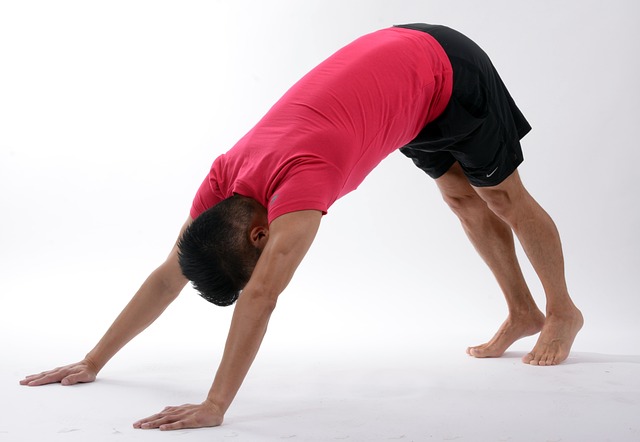
Many individuals wonder about the differences between hip thrusts and squats when it comes to targeting the glutes. While both exercises engage the gluteal muscles, there are key distinctions.
Hip Thrusts: Hip thrusts specifically target the gluteus maximus, the largest muscle in the gluteal complex. They isolate the glutes and allow for greater activation and hypertrophy.
Squats: Squats are compound exercises that engage multiple muscle groups. Including the glutes, quadriceps, and hamstrings. While squats also activate the glutes, they distribute the load among several muscles.
Incorporating both hip thrusts and squats into your training routine can provide a well-rounded approach. To glute development and overall lower body strength.
Continue Level 2 for Further Information.
<< Previous Post
https://newsstories.in/the-ultimate-guide-to-rowing-machines-unleash-your-fitness-potential/
>> Next post

